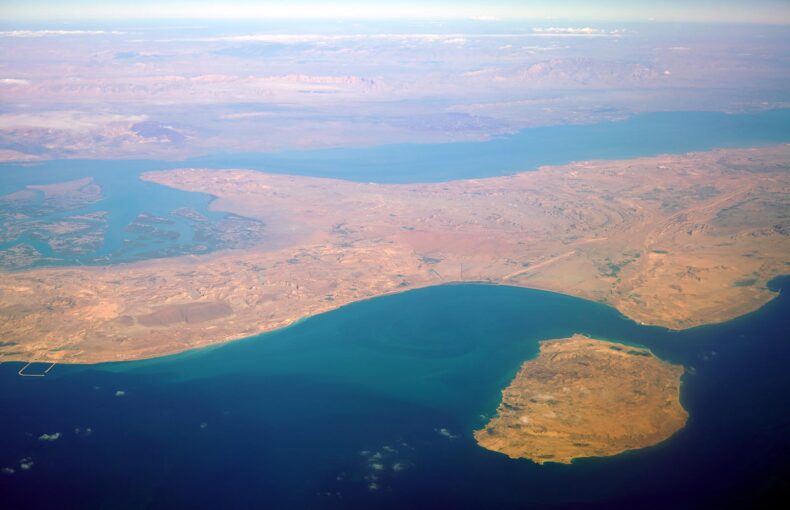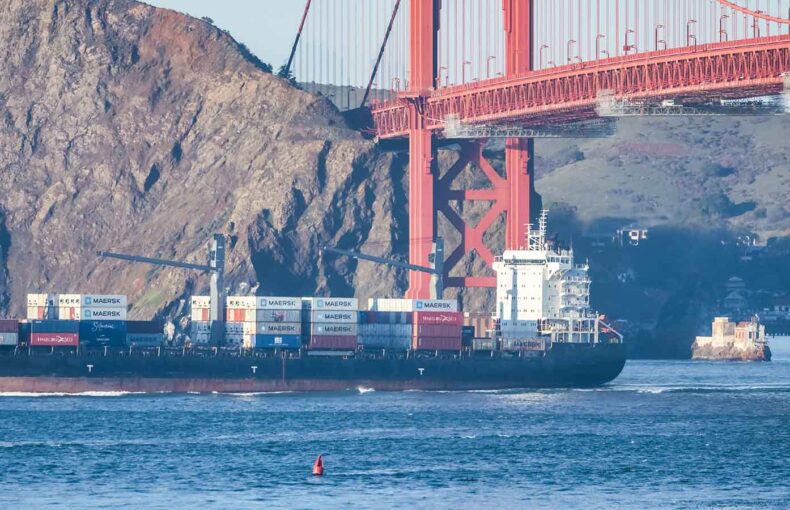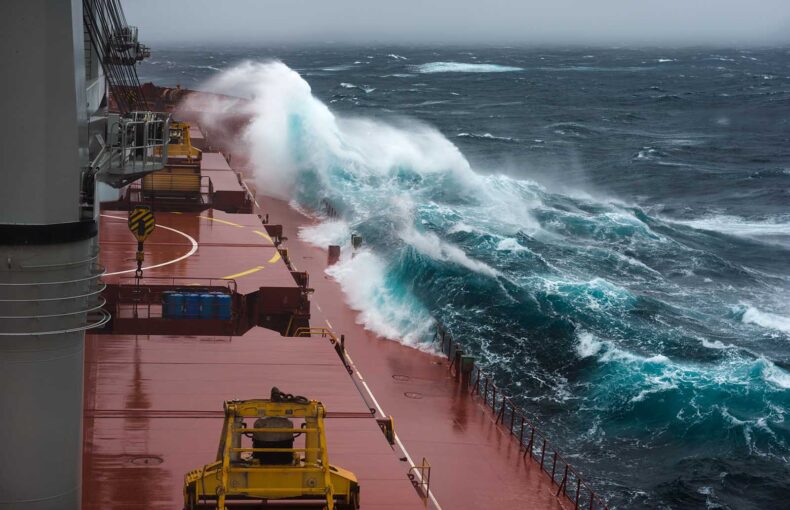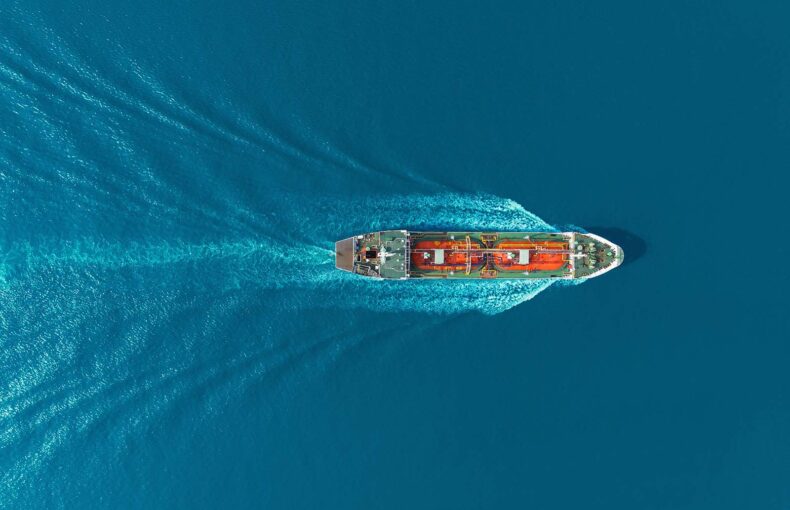Five port digitalization trends to watch in 2021
Seaports play a key role in supporting a nation’s global competitiveness and 2020 was a challenging year for port operations. Here are five trends that kept ports operating efficiently throughout the many challenges of 2020.
Seaports face economic and environmental challenges including accommodating market growth, ship sizes constantly increasing, climate change, and more traffic each day. The cost of adapting to a changing marketplace and amending port infrastructure are bound by budget constraints, public funding requirements, stricter environmental regulations, and changes in shipping routes as a result of the expansion of the Panama Canal. This changing landscape is challenging for port managers and vessel operators alike, but data and technology advances are helping to ease the burden on decision makers.
Satellite constellations enable comprehensive global data collection that can be used to make data-driven decisions. This global view of the world feeds predictive models allowing ports to estimate arrival/load delays and better plan for disruptions and backlogs. Knowing what conditions exist in open oceans and around a port is key to timing your arrival and offloading cargo efficiently.
With the barrier of entry to the global economy becoming easier, ports play a key role in supporting a nation’s global competitiveness. In fact, many ports operate on a 24 hour a day work clock to accommodate increasing demand and traffic congestion. Because of this nonstop schedule, port officials require a real-time feed of 24/7 data to plan their operations. Modern ports operate in a state of constant transformation and are forced to pivot to meet worldwide supply chain demands everyday.
Technology Eases the Burden
Port technologies are an ever-growing vertical, integrating IoT, automation, machine learning, and environmental reforms. There are layers to the digital transformation taking place at ports that include security concerns, improved processes using big data, value-added geographical systems, and traffic management aimed at reducing carbon emissions.
Climate change delivered hard-hitting storms this year, which added costs to dock and warehouse maintenance. Ports operators are tasked with managing the cost of unexpected repairs on top of annual goals that include cutting costs due to the challenging profit margins found in maritime. With all of these challenges, many seaports are investing in data and technology to build more efficient and sustainable operations and many are implementing advanced weather forecasts to help them accurately plan for an ever-changing future. Advances in forecast data collection, including radio occultation, provide more detailed and more accurate forecasts allowing port authorities to react to weather conditions before they occur.
How will ports improve their infrastructure, deliver more efficient services, and stay ahead of a changing weather environment? Here are a few things we’re seeing:
1. Localized Forecast Data
Seaports experienced a complicated and costly 2020 due to an increased number of storms and the impacts of climate change. Seaports are tasked with assessing incoming storms and timing shutdowns to protect worker safety, import/export schedules, and ship safety. There is a delicate balance for seaport operators to time their shutdowns to avoid unnecessary shipment cancellations and lost revenue. Shutting down too soon has its risks, but shutting down too late also carries a large price tag.
Localized forecasts help seaport operators plan shutdowns. With weather events on the rise, port operators are relying on weather forecast data, particularly weather forecast data optimized for a specific location, to make shut down decisions. Historical weather data has also proven valuable for building machine learning models and better predictive analytics. Optimized forecasts take into consideration both natural and man-made obstructions at a specific location to deliver a complete analysis of weather patterns in an area.
2. Reducing Emissions
Traffic around ports create a particular swell of pollution in these areas. Idling vessels waiting in a cue to enter a port emit carbon and have a negative impact on vessel fuel economy. One innovative solution to the pollution issue in these congested areas was unveiled at the Port of Antwerp in 2019. Port authorities at Antwerp announced a plan to begin using a hydrogen powered tugboat. With the goal of becoming carbon neutral, the bustling port had also begun using a hydrogen powered ferry in 2017. Look for more ports to begin using vessels run on alternative fuels in the coming years.
The other pollution source near ports are the vessels lined up, idling, waiting to enter the port. Port operators are constantly trialing new procedures aimed at moving traffic through to the berthing process and then streamlining port services to be undertaken in a more rapid way. The more vessels that can berth at once, the less traffic will be waiting outside of the port. A constant flow of data aimed at speeding up this process is under constant analysis.
“All modes of freight transportation rely almost entirely on fossil fuels, which are the primary cause of greenhouse gas (GHG) emissions and global warming. (…) Reducing CO2 emissions from the freight sector is thus of critical importance in seeking to meet global climate goals.”
The International Council on Clean Transportation (ICCT)
A 2019 report from the International Council on Clean Transportation (ICCT), highlighted that freight transportation relies on fossil fuels. Fossil fuels are major contributors to greenhouse gas (GHG) emissions and global warming. With freight-related CO2 emissions projected to increase by 77% in the marine industry by 2050, most maritime companies are looking to reduce their emissions now and help create a greener supply chain. Port selection is now a calculation of market forces and port efficiency in an effort to reduce emissions and weather routing is a vital component of these calculations.
Weather impacts fuel usage, which has led to an interest in weather forecast data to help build vessel performance simulations. These simulations help identify the most efficient routes and ports to use in terms of fuel and time efficiency. Weather elements, like winds and waves, have a particularly dramatic effect on vessel performance. Some ports are positioning themselves as the most efficient destination port to connect to certain parts of the world, providing shippers with the ability to reduce their carbon footprint.
3. Shipping Alliances
Shipping alliances were originally created as a way to enable low-cost transportation. Fast forward to today and these alliances are major contributors to port complications and many officials are looking to replace them with more viable alternatives. The main factor causing strife with shipping alliances and ports is that ships carry mixed cargo now and this mixed cargo is an operational problem when being offloaded. Terminal operators have to sort through the types of containers onboard and offload them according to their port plan. This sorting results in time delays and adds to congestion, but is essential to port organization and tracking. Most port officials agree that altering ship alliances to reduce the mix of container types would reduce berthing times and be more favorable for optimizing port operations.
4. Digital Twins
Delays cause big cost increases for shipping firms, so ports are tasked with processing vessels quickly and efficiently. One way to do this is to implement the most efficient operational processes possible. To define new processes there is always a measure of trial and error to sort out what works and what doesn’t work. A digital twin is a digital replica of a certain place that allows users to experiment with changes and measure their impacts without real-world consequences. A digital twin allows port authorities to test procedures and calculate whether they reduce congestion in and around their port prior to implementing the changes. Trying out new processes digitally rather than in reality allows port authorities an unlimited scenario testing or virtual trial runs, that if they don’t pan out as time saving or cost saving, they can be scrapped and reinvented. Prior to digital twins, ports had to roll out a plan and wait to see if it was functionally beneficial. These trial and errors were extremely costly prior to digital twins.
Additionally, substantial growth in e-commerce as a result of the COVID-19 pandemic allows for complete visibility of the shipping process. This puts ports under more pressure as purchasers can track their items from end-to-end increasing transparency in port delays. This added visibility makes any delay appear as a bottleneck in the shipping process, forcing port operators and shippers to plan out their processes in an immaculate way. Digital twins again, allow for trial and error virtually, saving costly trial runs.
5. Automation
Bigger ships mean more cargo and more containers to be offloaded and ship size is increasing annually. The upside of bigger ships is less traffic at ports, but the time it takes to unload these mega ships is significant. Most major ports can manage these huge ships and have implemented automated processes for container handling. Ultra large container vessels (ULCVs) benefit the most from automated container handling as it delivers greater consistency and reduces human error and delays. Automated processes also increase crew safety and help reduce carbon emissions.
With more and more people talking about the physical internet in the log-tech space, the idea of building a connected supply chain network from a combination of IoT and Big data is becoming a reality. This concept could revolutionize the supply chain market, reduce disruptions, optimize consumption, and drive transparency. Ports would play a key role in multimodal route optimization where possible combinations of transport modes could be calculated to devise the most efficient choice at that moment in time. However, determining the ideal route, with a combination of land, sea, and air possibilities, is complicated and dependent upon using data that is accurate and truly global. Also, companies may have varying goals for their shipment that range from quickest delivery to environmental impacts to cargo safety. Given these parameters, the system would need a function to calculate the end goal.
New Year, Similar Goals and a new Focus on Data & Digitization
Even as this unprecedented year comes to a close, port operators are looking ahead to 2021, which will have many of the same challenges as this year. Climate change, evolving COVID-19 protocols, environmental regulations, and supply chain management all stack up to create a busy and challenging new year that will rely on data to help make clear decisions and technology to help speed up the berthing, unloading, and turnaround processes.
The digital revolution in maritime will continue to build momentum and new solutions and services will help to further streamline processes and make data-driven decisions.
 Written by
Written by


